U2
1/32
Earn XP
Description and Tags
Name | Mastery | Learn | Test | Matching | Spaced |
|---|
No study sessions yet.
33 Terms
Ribosome
makes proteins, made of rRNA, found in cytosol & RER
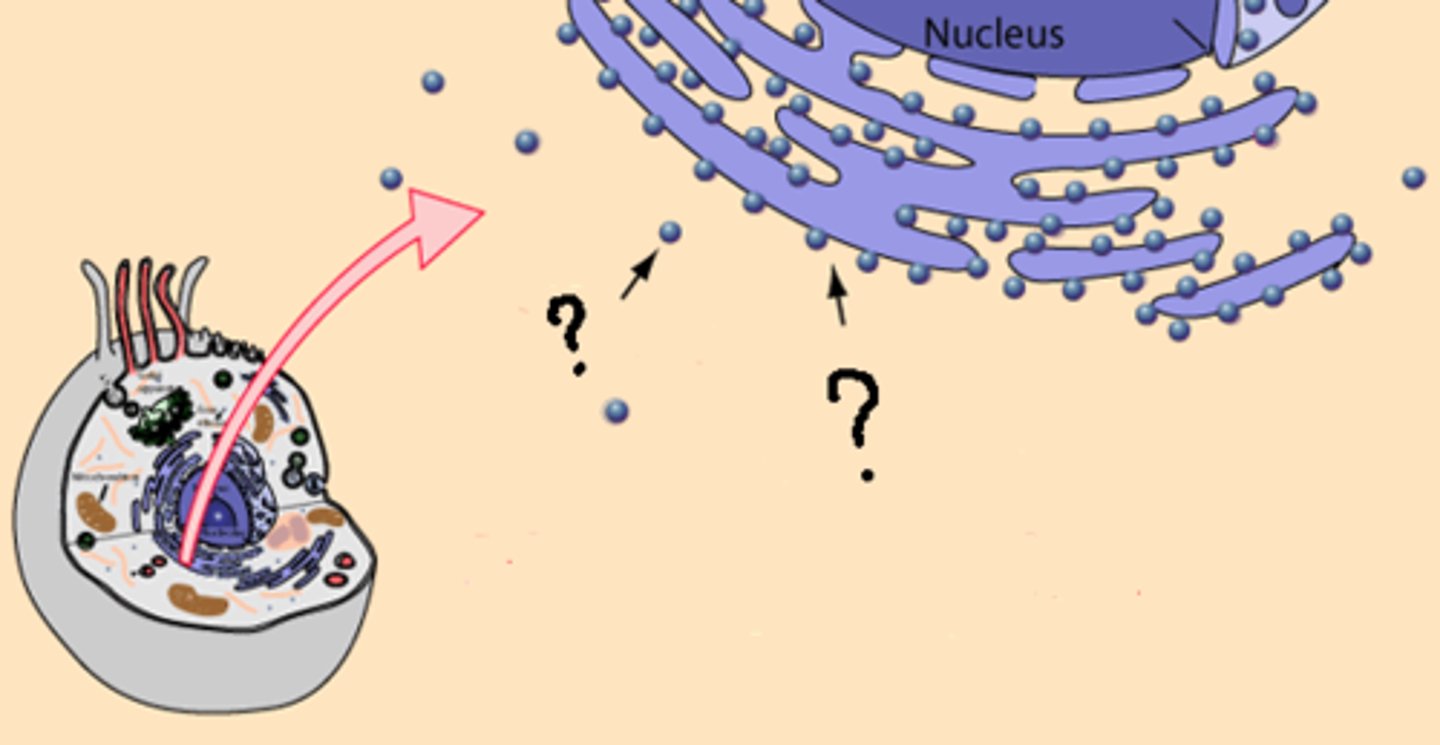
Lysomsome
vesicle that digests (hydrolyze) and breakdowns materials of excess, old or worn out cell structures
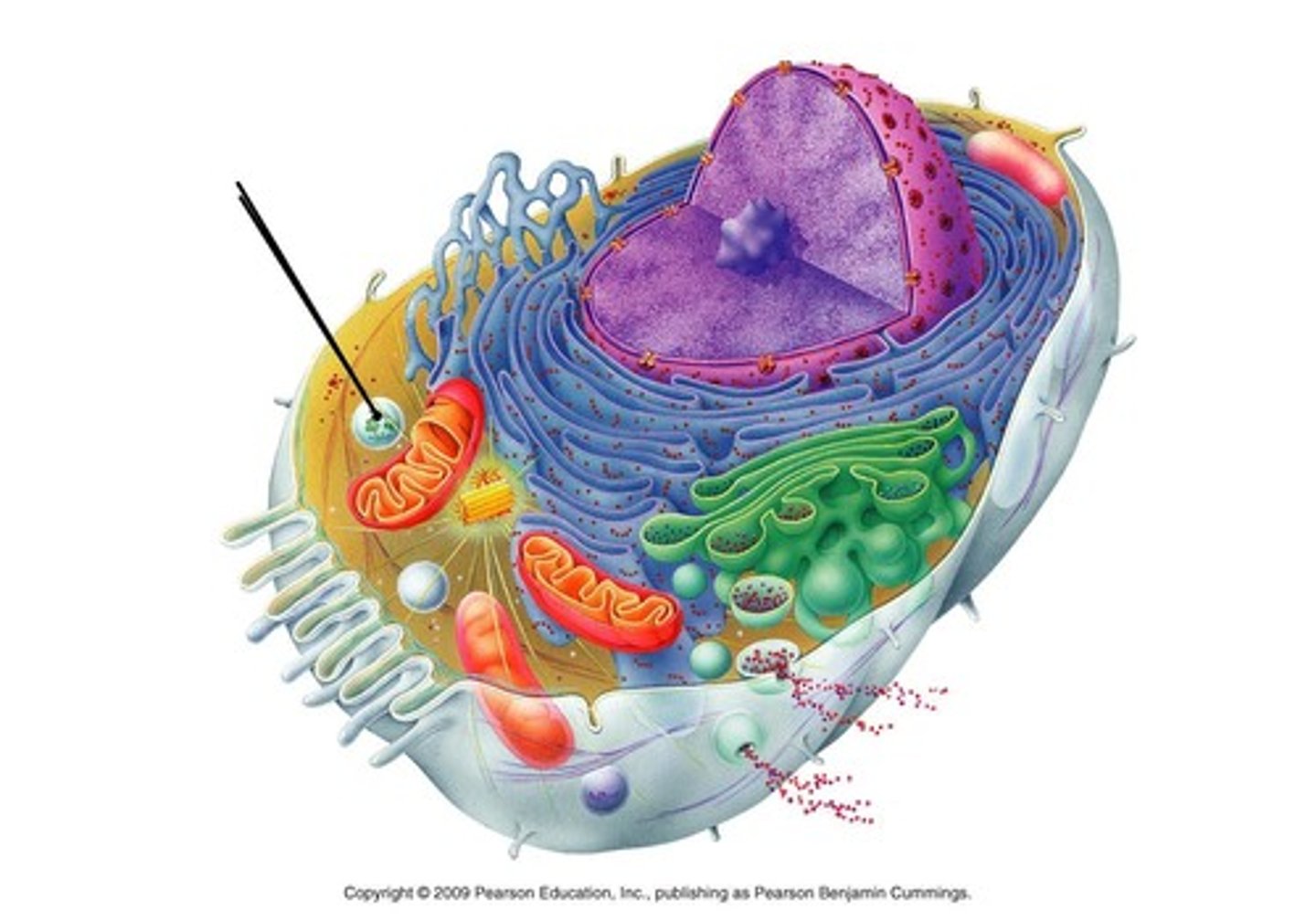
Nucleus
Control center of the cell; A part of the cell containing DNA and RNA (genetic material) and responsible for growth and reproduction
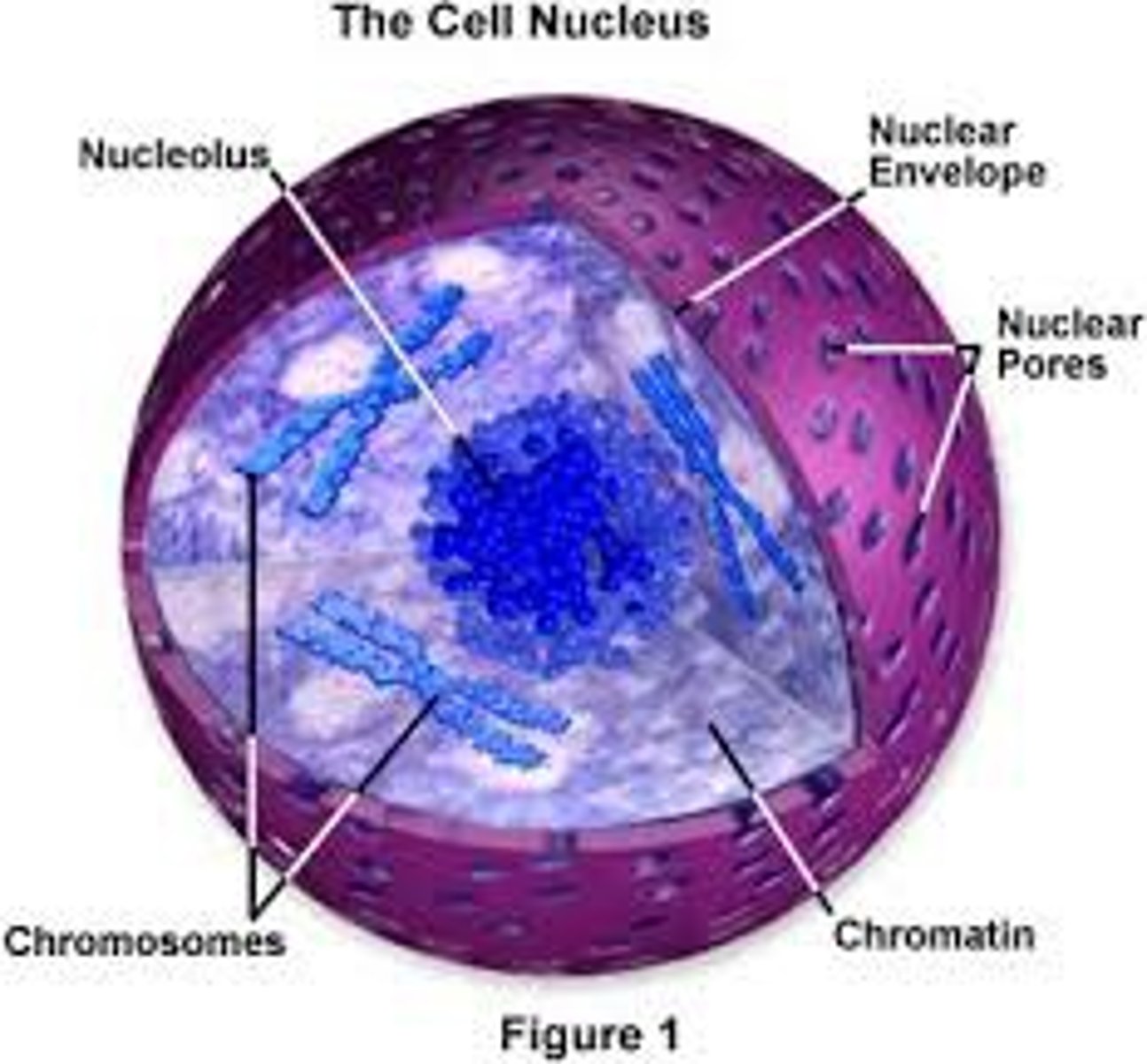
Nucleolus
Found inside the nucleus and produces ribosomes
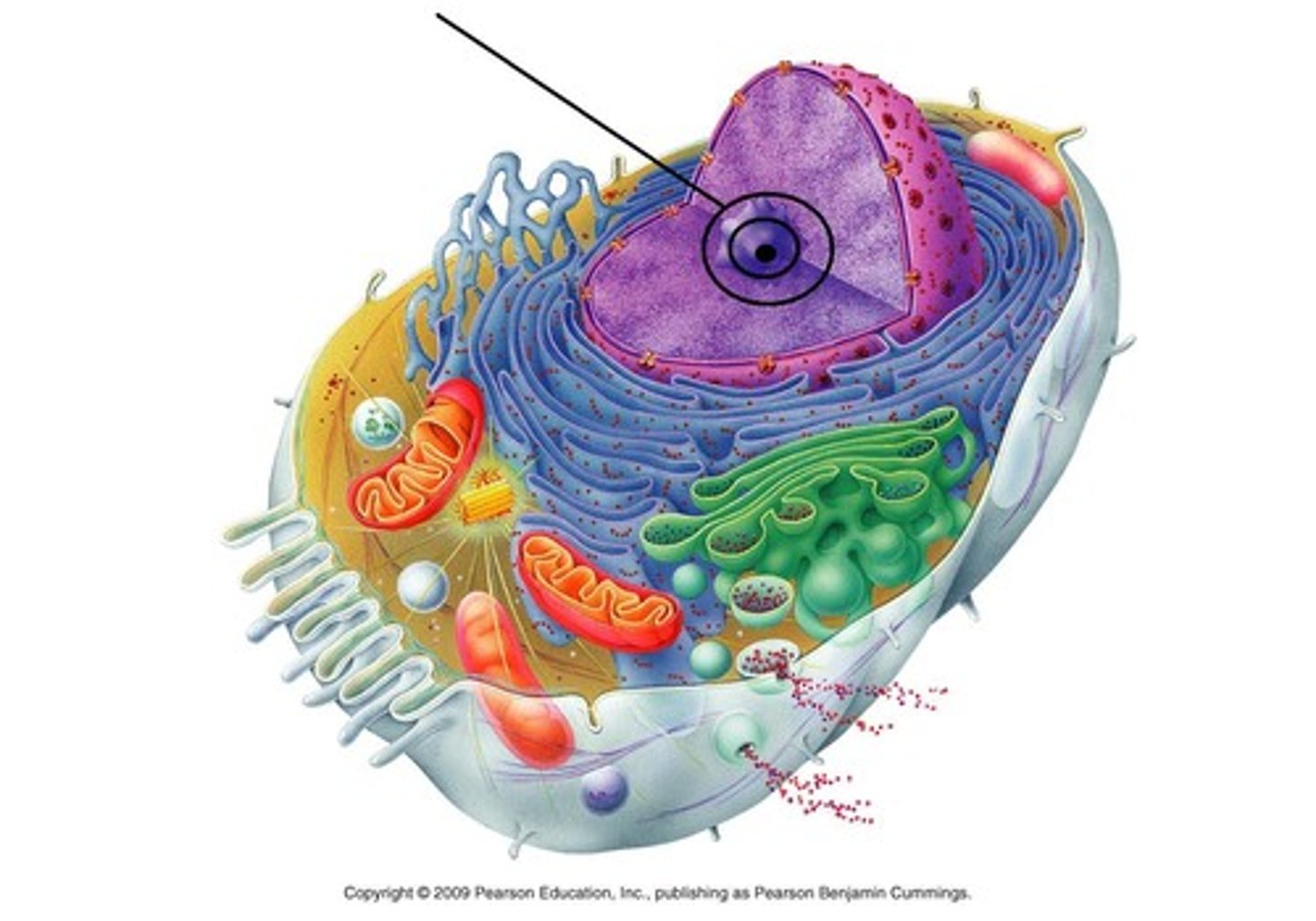
Cell membrane (plasma membrane)
phospholipid bilayer that surrounds all cells and regulates what enters and leaves the cell
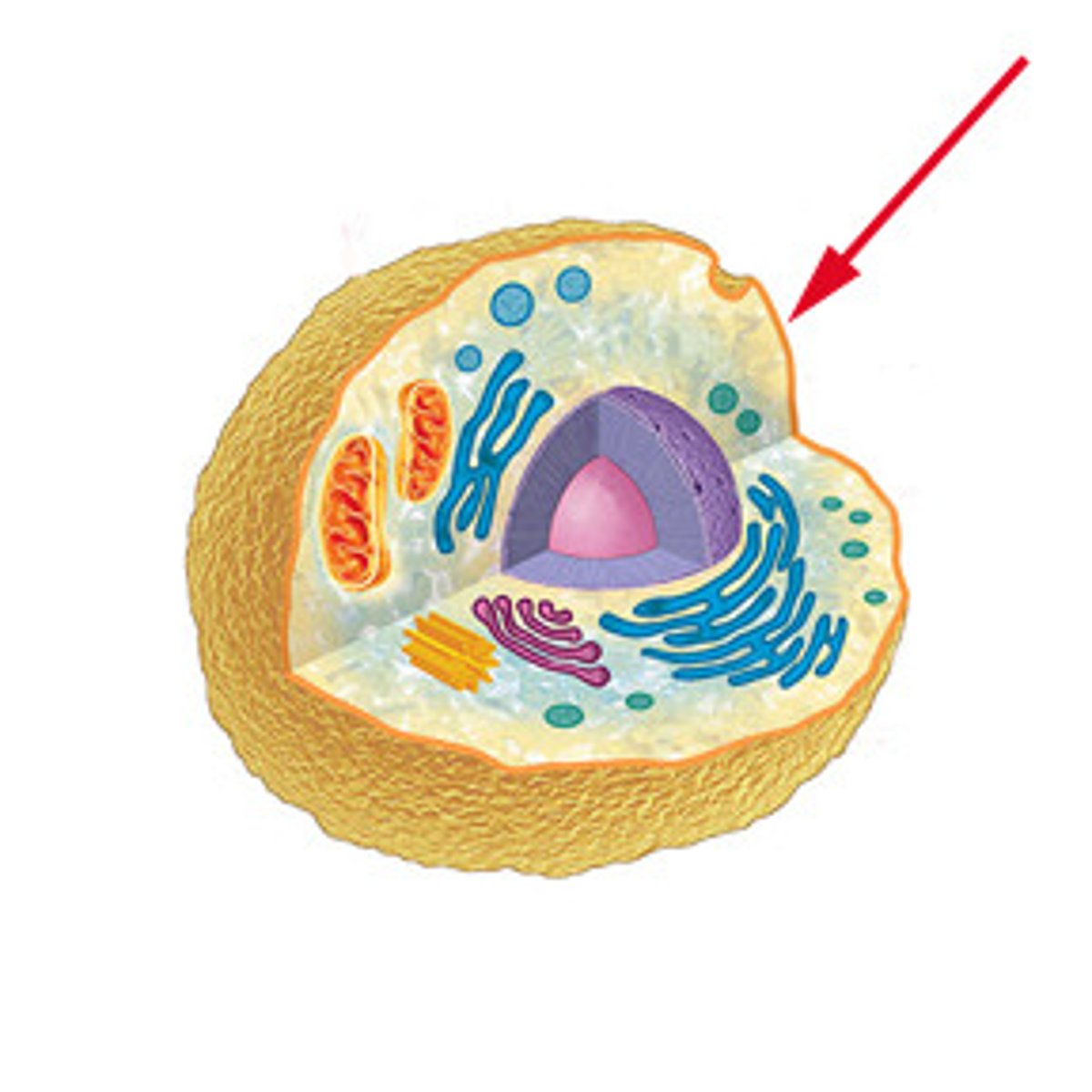
Cytoplasm
A jellylike fluid inside the cell in which the organelles are suspended
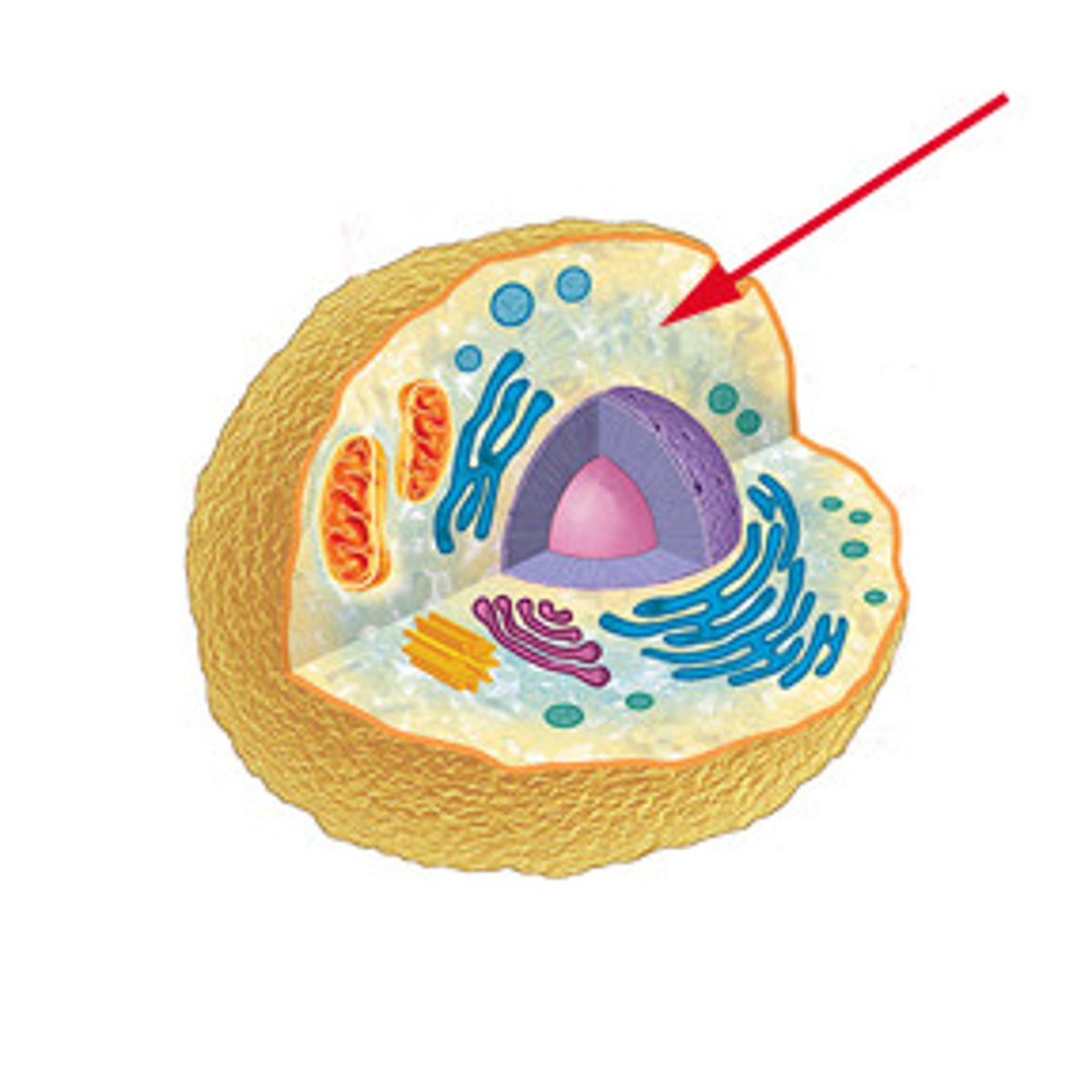
Cilia/Pili
Hairlike projections that extend from the plasma membrane and are used for locomotion
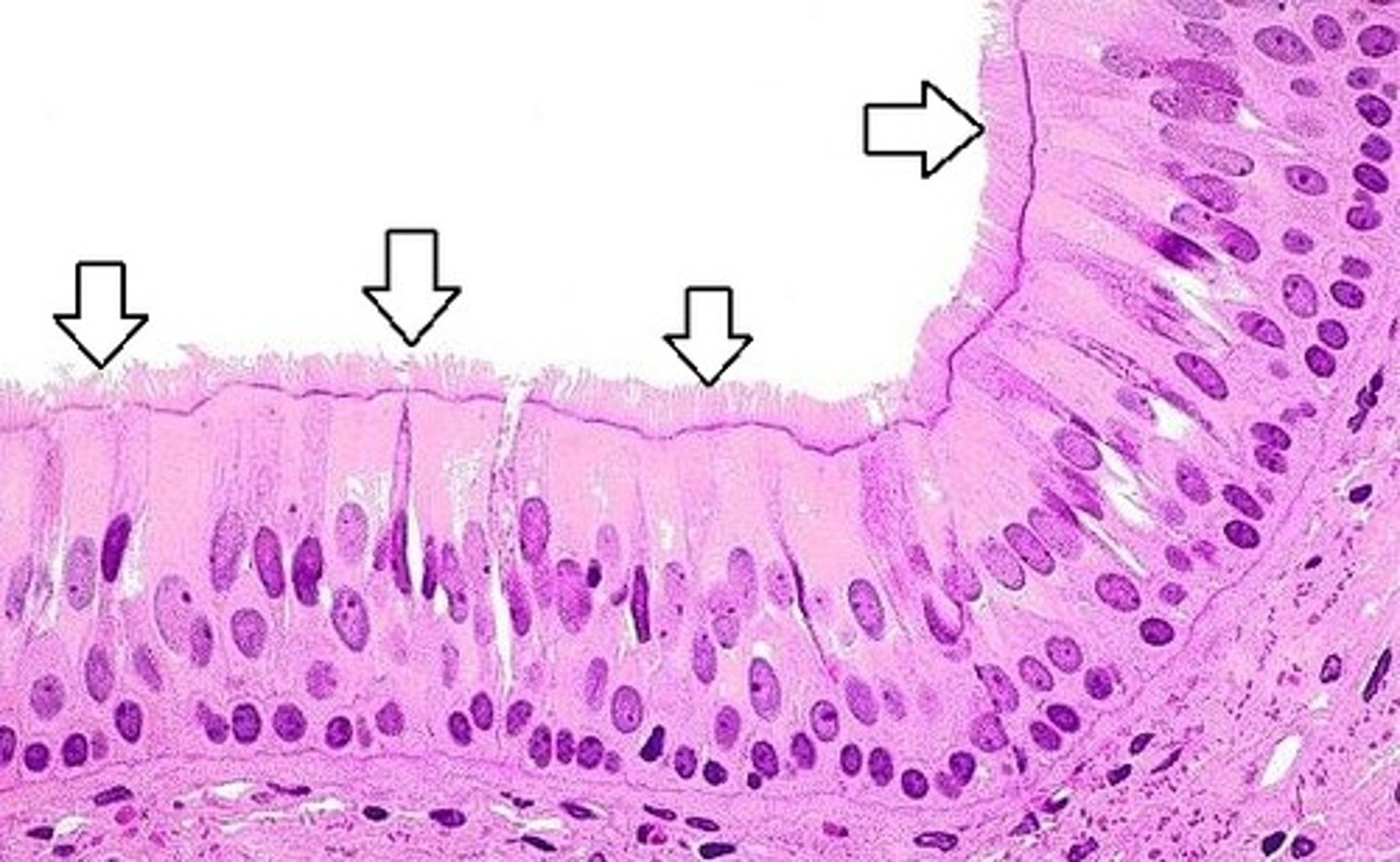
Golgi apparatus
Cellular transportation system. Modifies, sorts, and packages proteins for distribution.
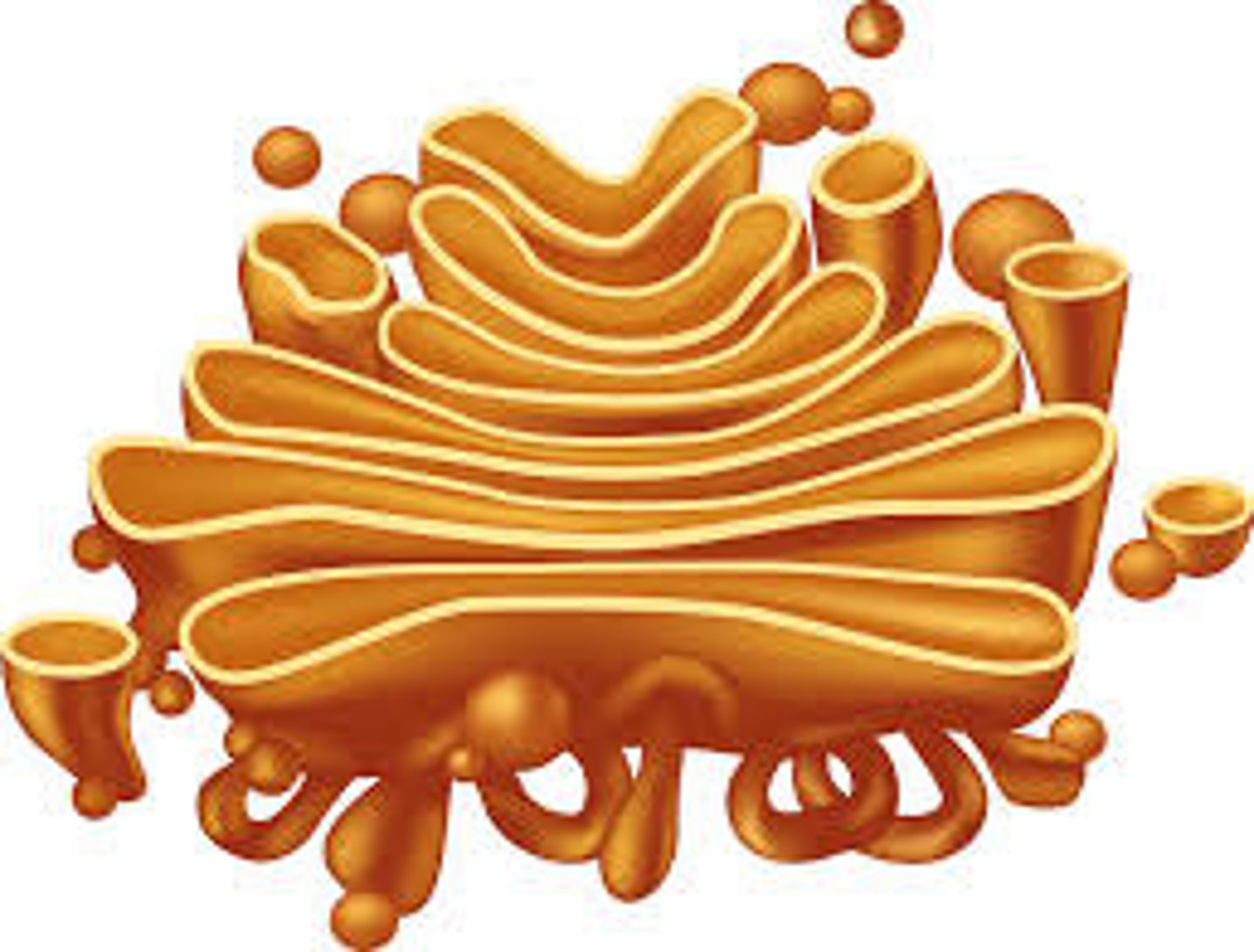
Cytoskeleton
A network of fibers that holds the cell together, helps the cell to keep its shape, and aids in movement
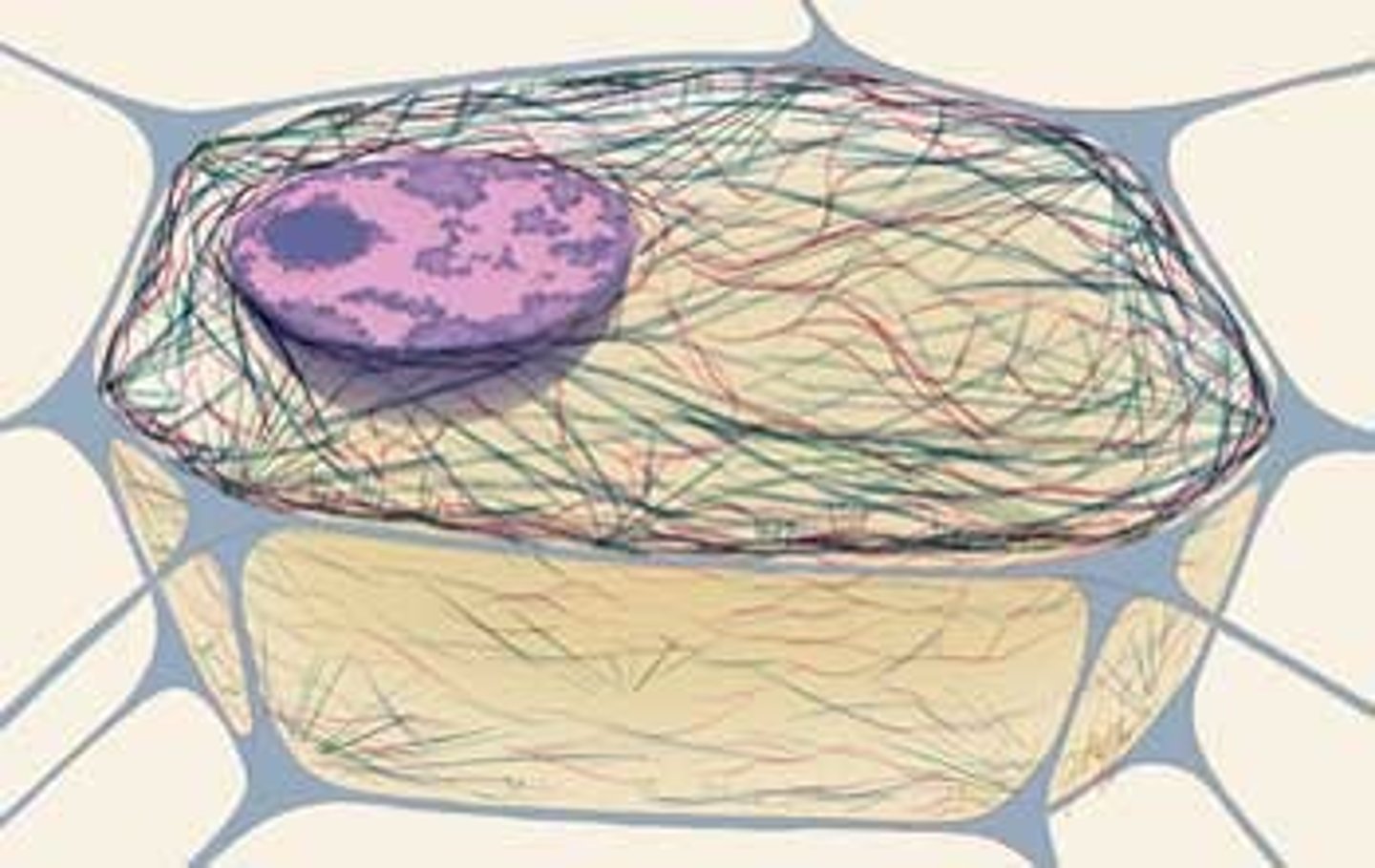
Rough Endoplasmic Reticulum (Rough ER)
Membranes are rough due to the presence of ribosomes. Function is to produce proteins for the cell.
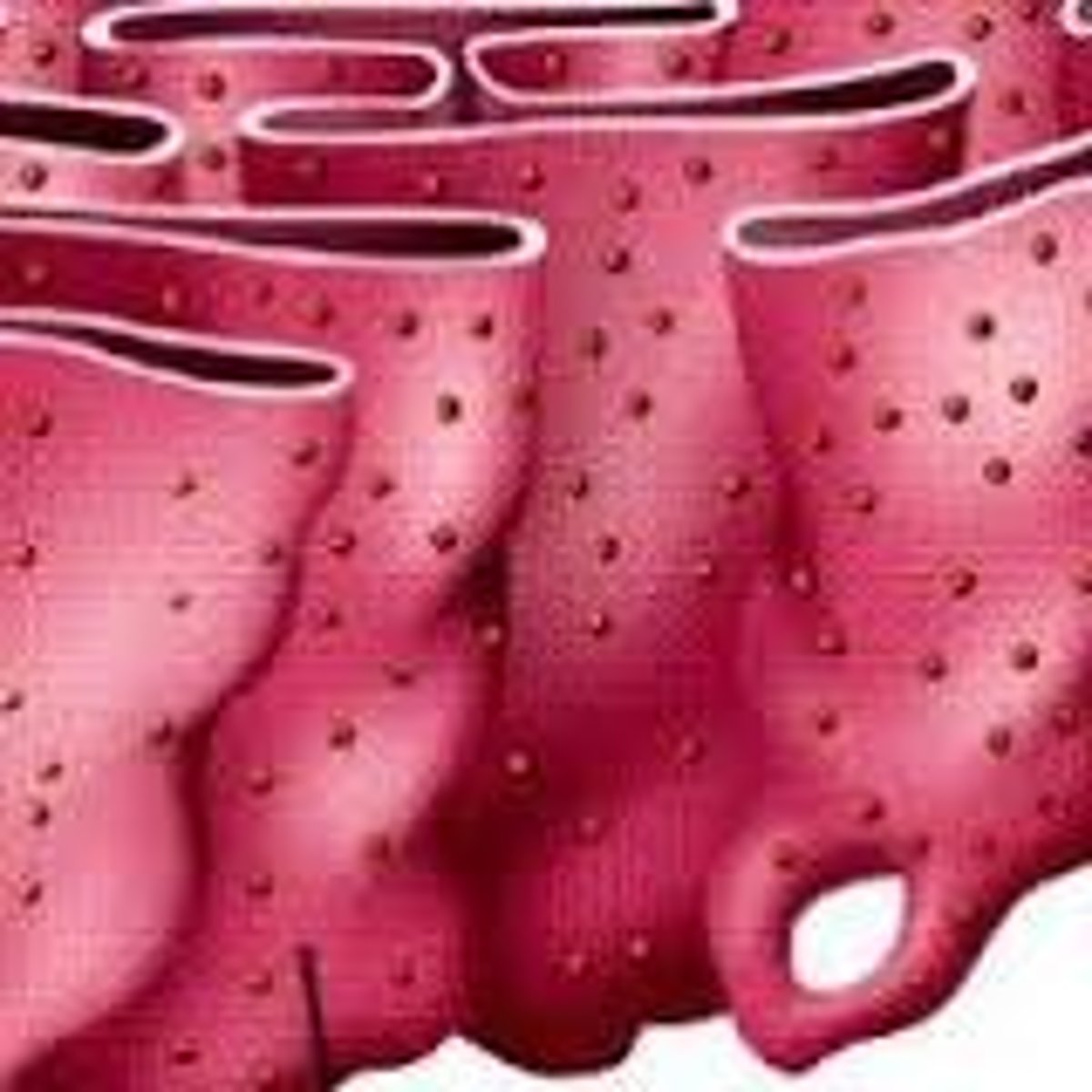
Smooth Endoplasmic Reticulum (Smooth ER)
Does NOT have ribosomes attached to it. Involved in synthesis and secretion of lipids.
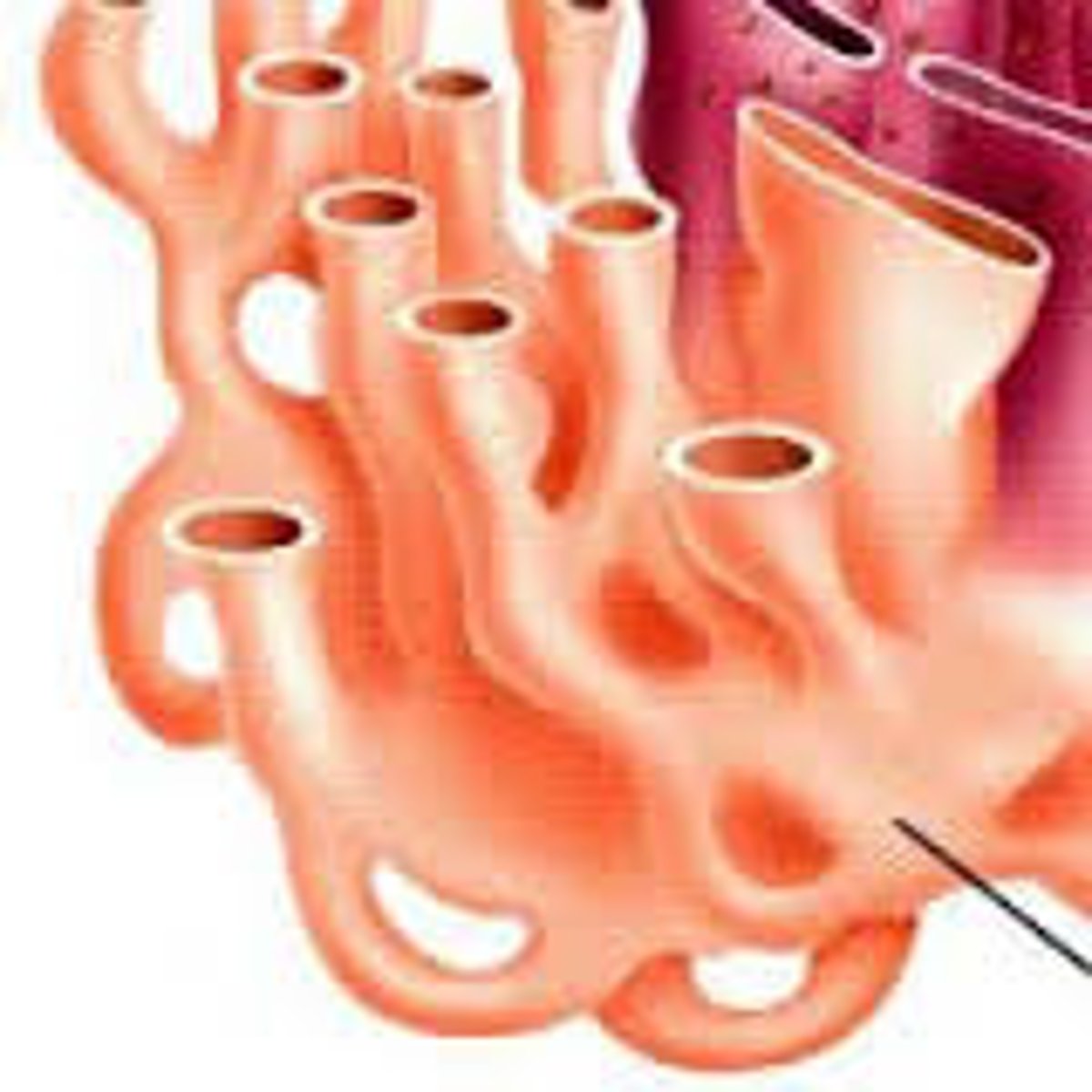
Flagella
whiplike tails found in one-celled organisms to aid in movement
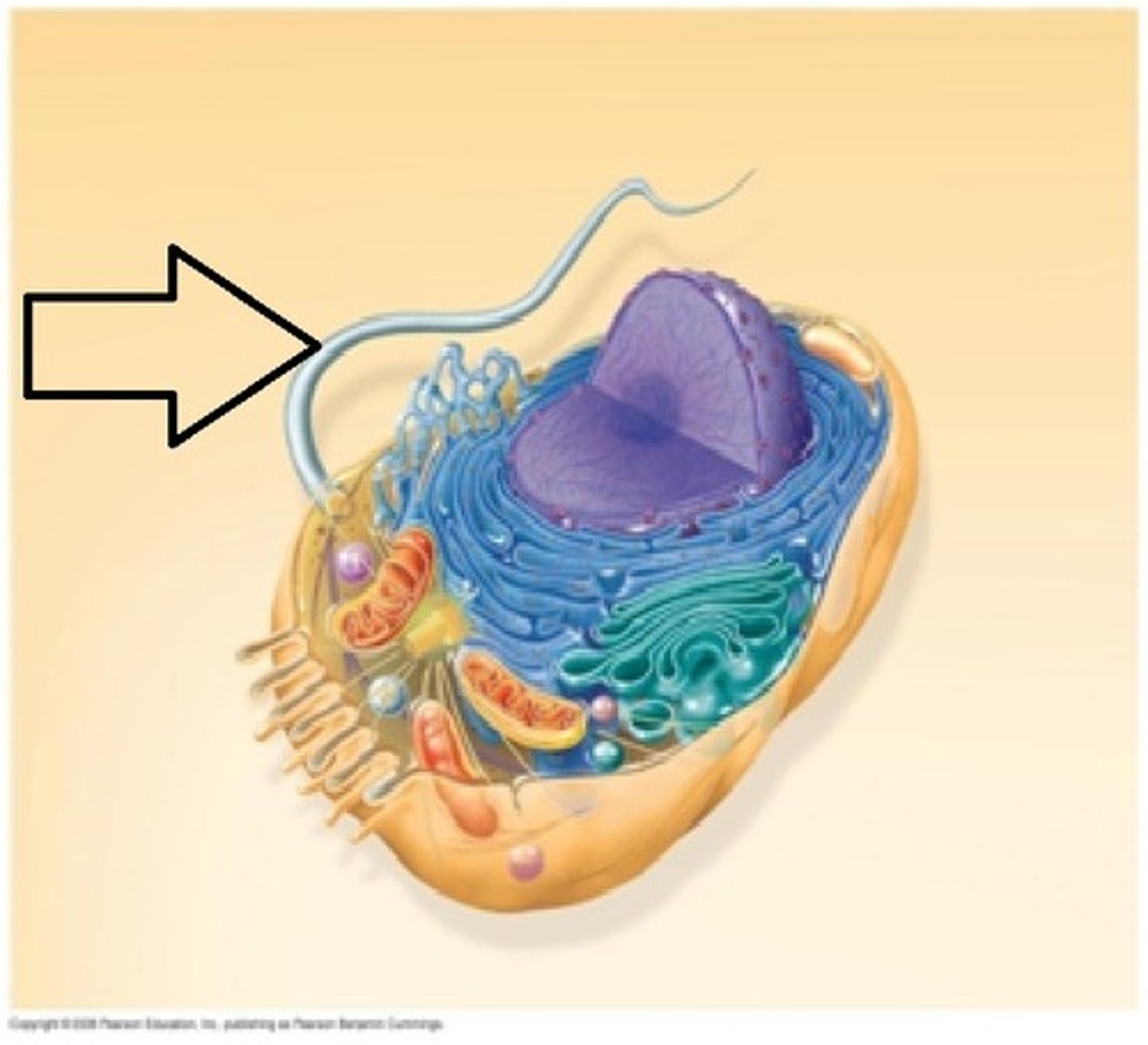
central vacuole
A large vacuole that rests at the center of most plant cells and is filled with a solution that contains a high concentration of solutes; helps cell maintain shape.
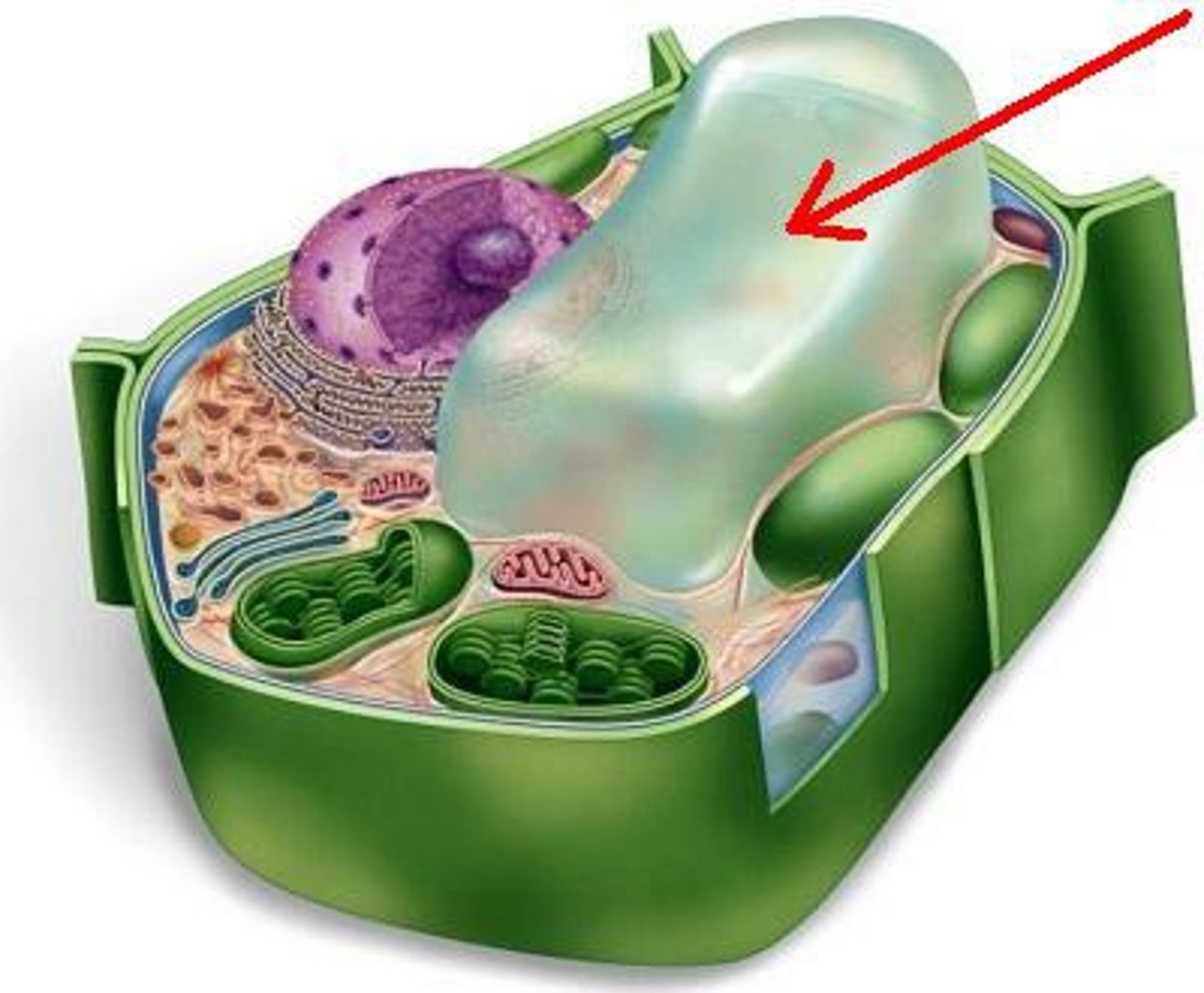
Chloroplast
organelle found in cells of plants and some other organisms that captures the energy from sunlight and converts it into chemical energy; site of photosynthesis
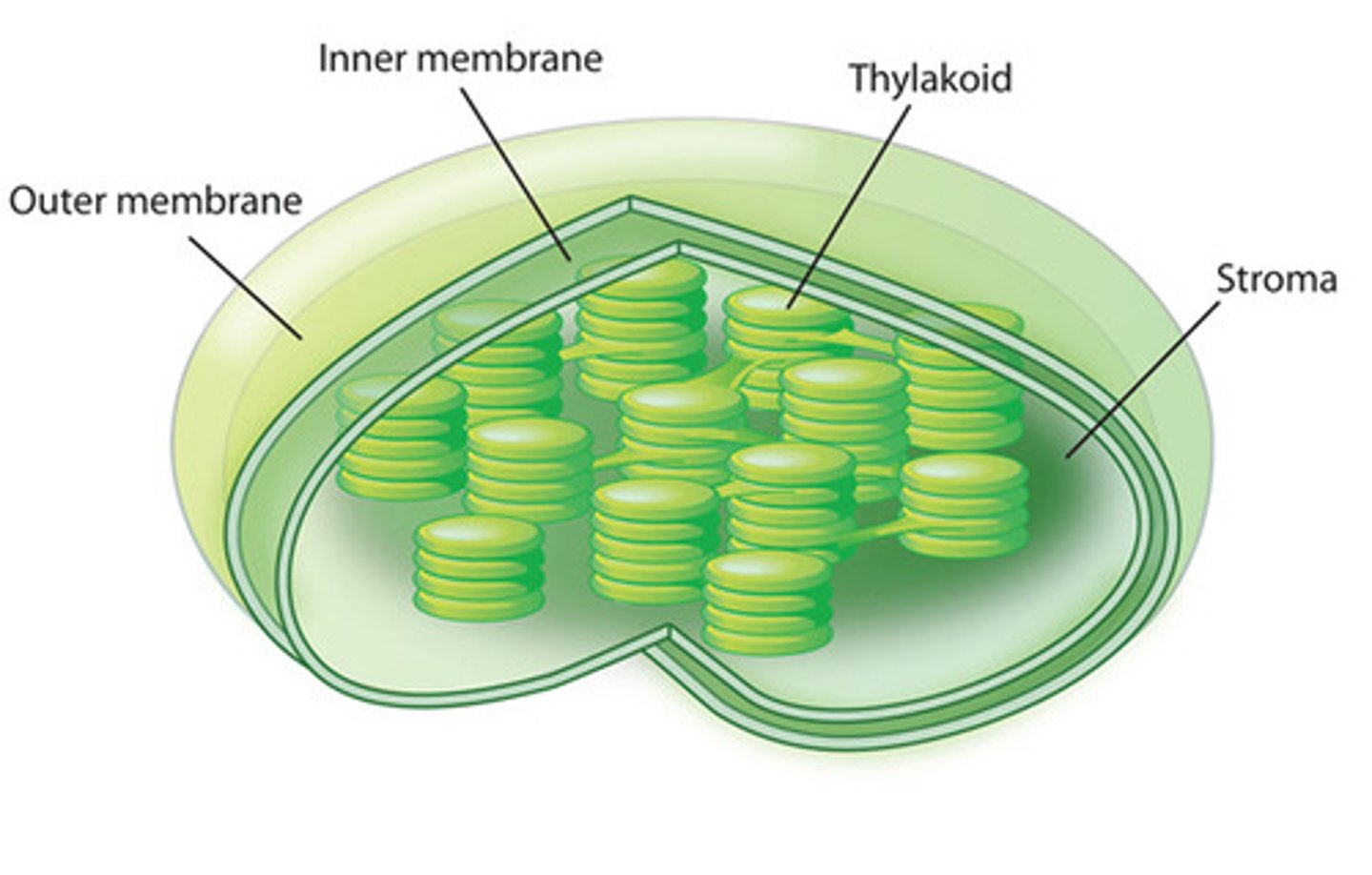
cell wall
strong, supporting layer around the cell membrane in plant cells
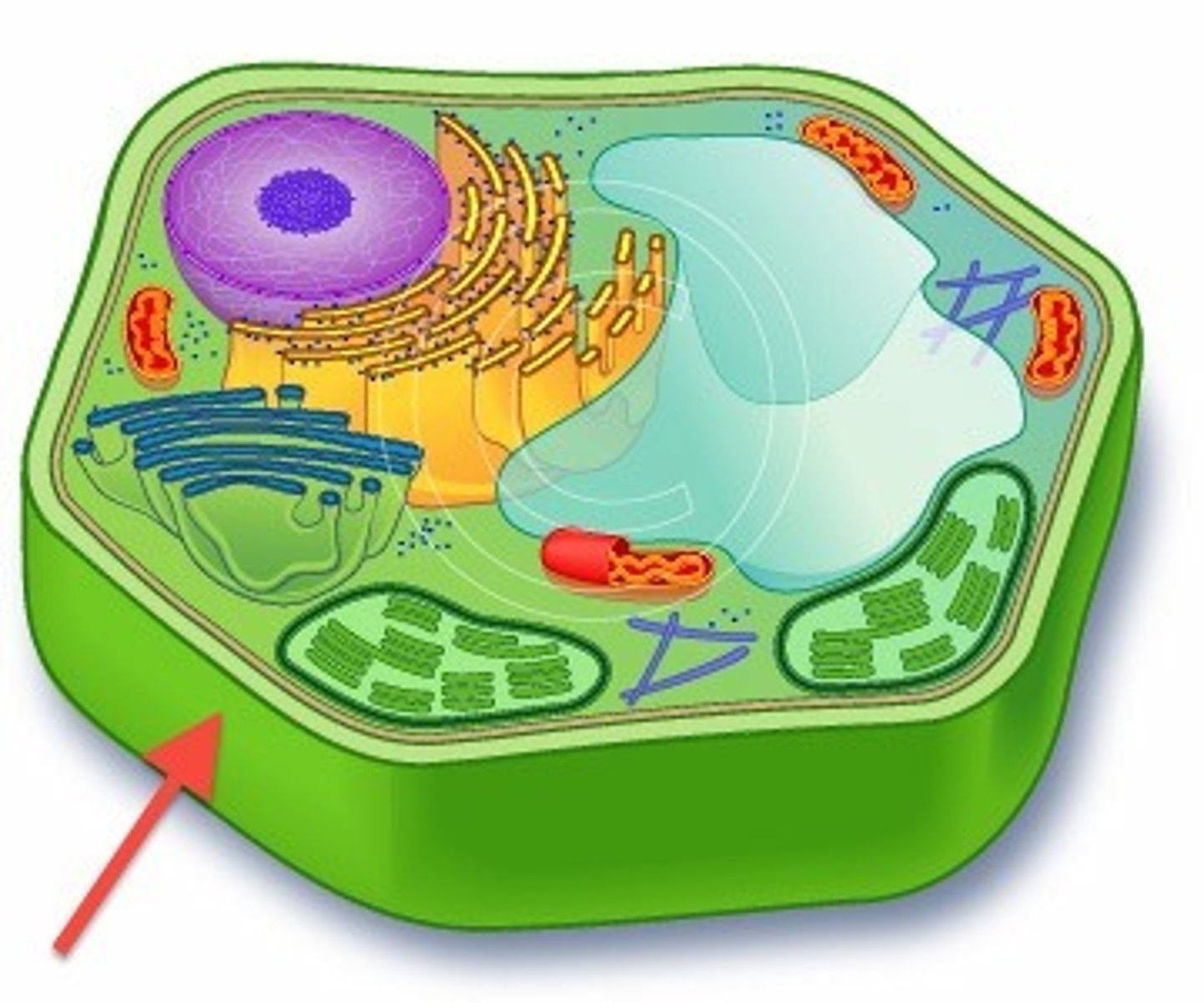
animal cell
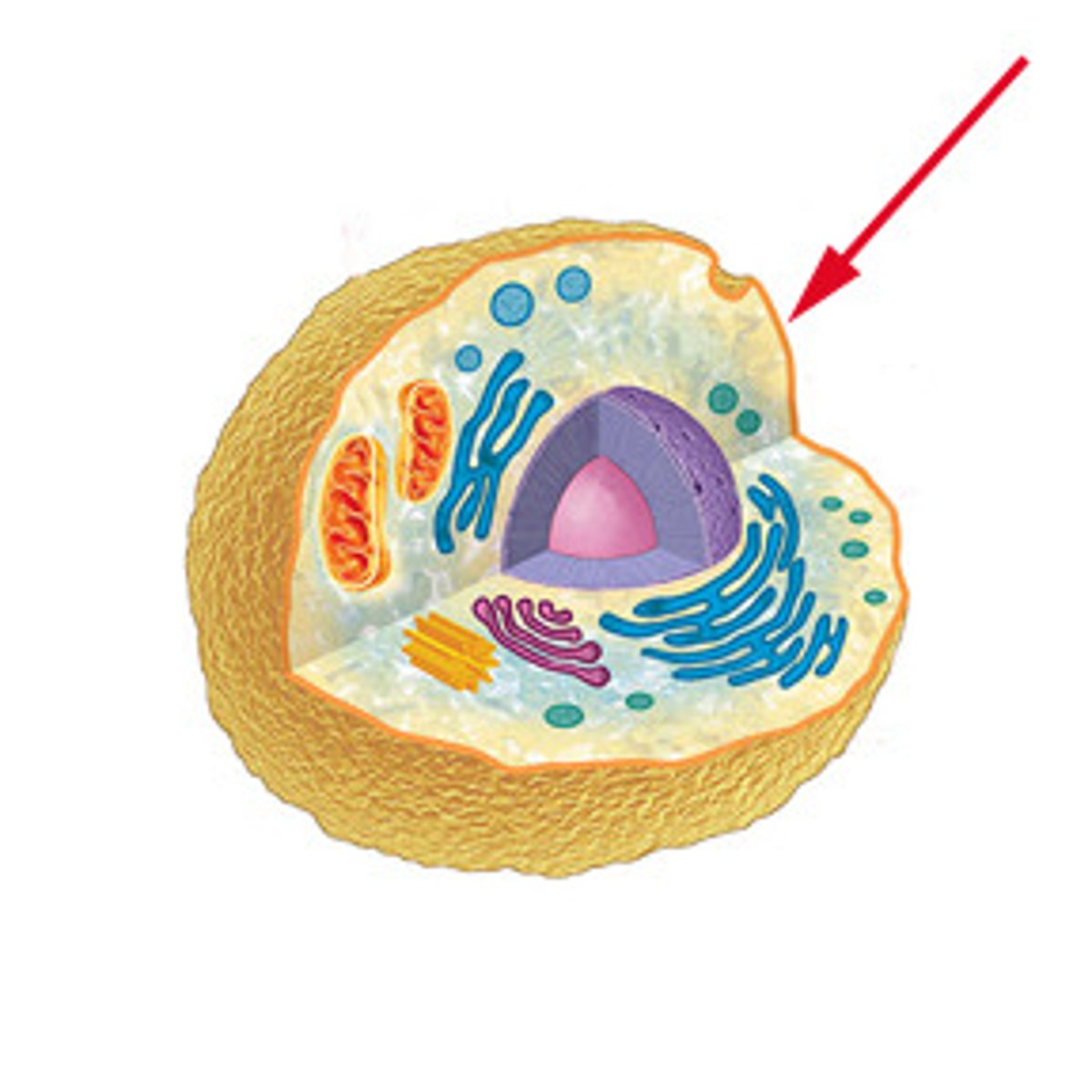
plant cell
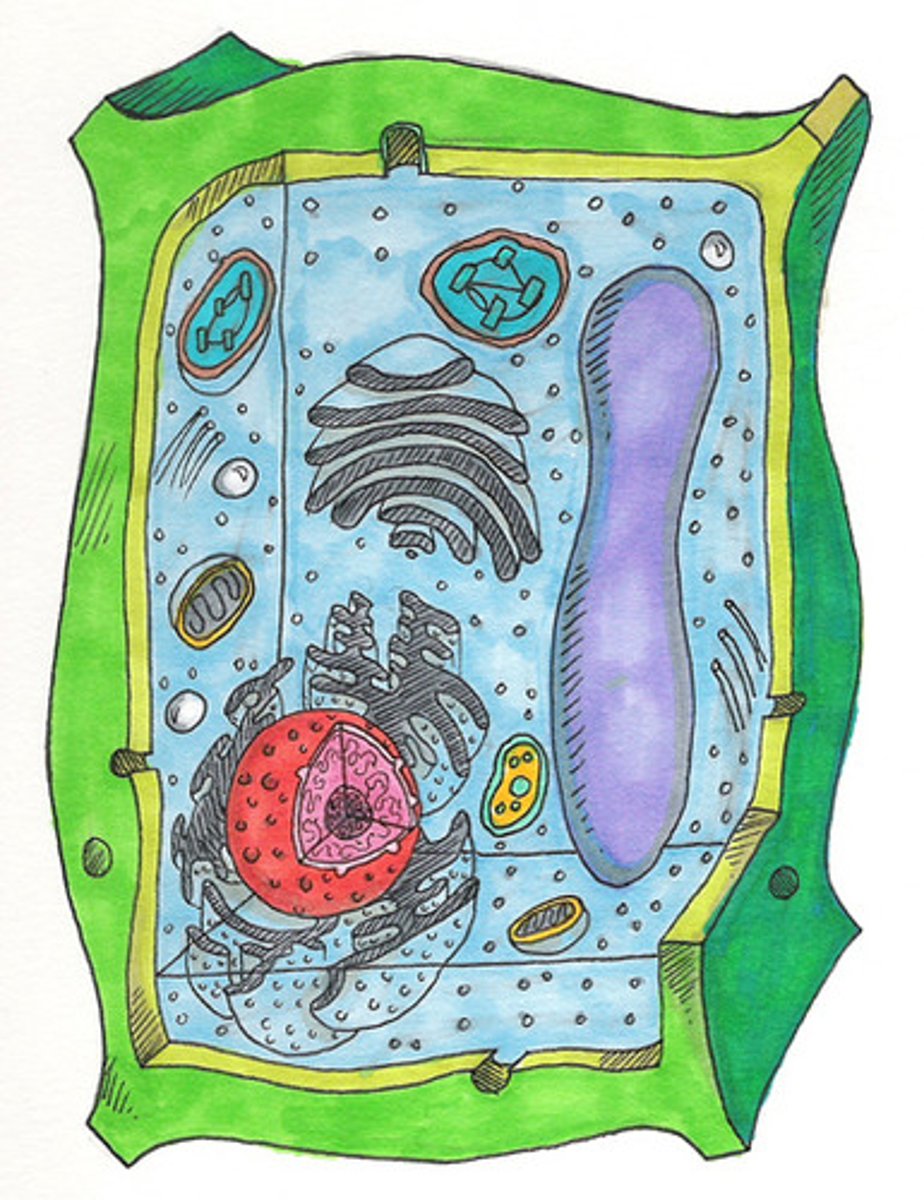
prokaryotic cell
single cell organism that do NOT have a nucleus or membrane bound organelles
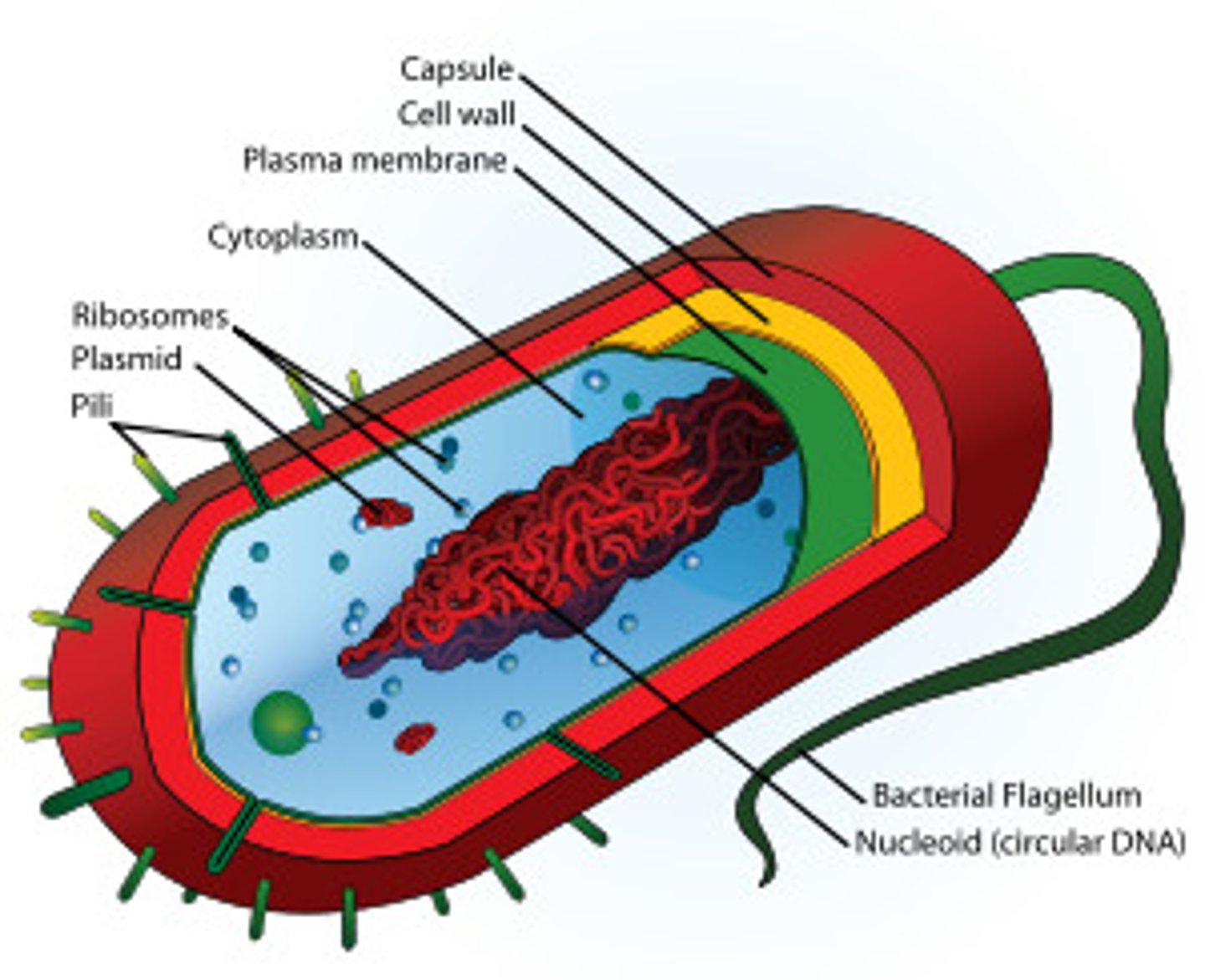
eukaryotic cell
cell that has a nucleus and other membrane-bound organelles
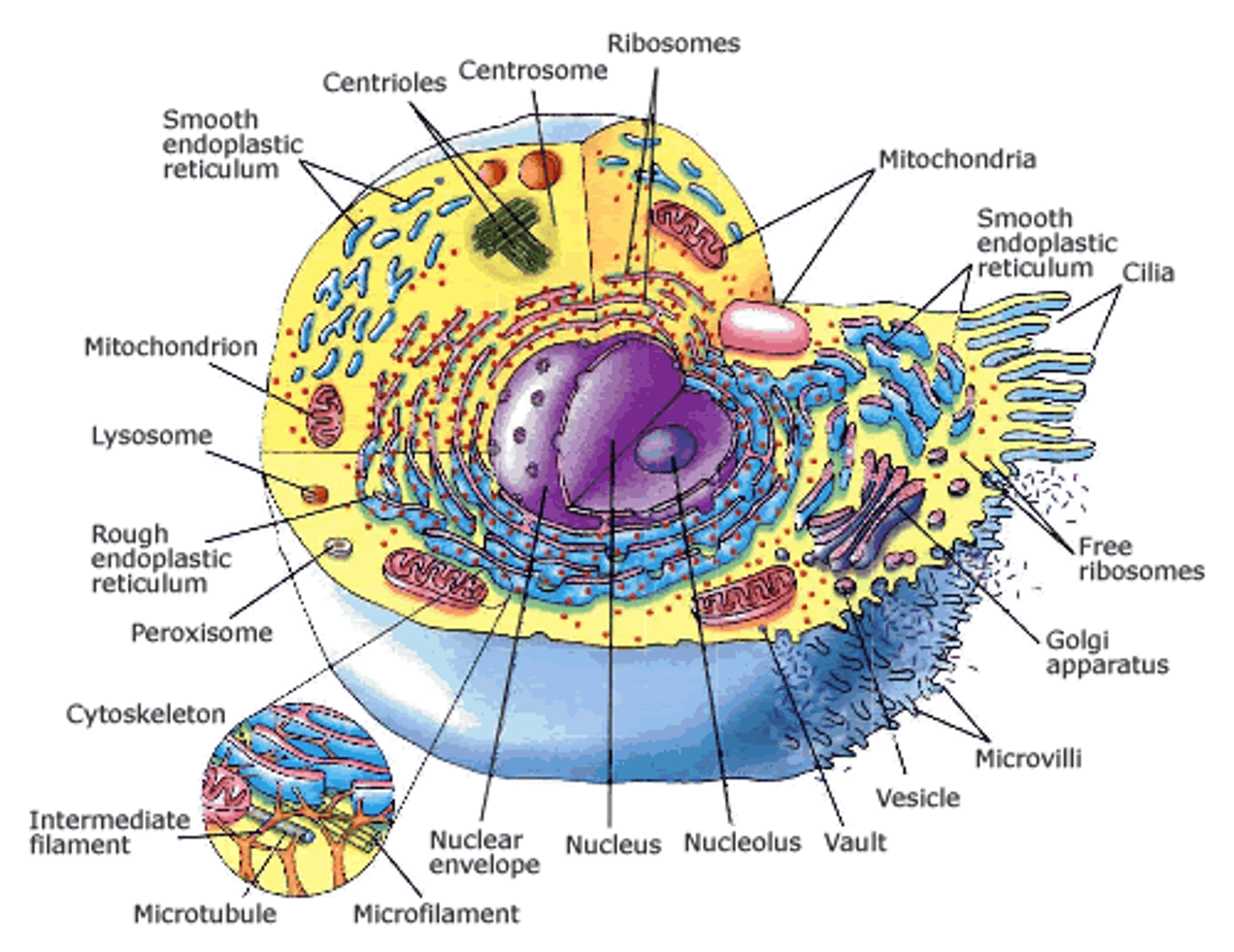
Cell Theory
1. All organisms are composed of one or more cells
2. The cell is the basic structural and functional unit in organisms
3. All cells come from preexisting cells
Nucleoid region (prokaryotes)
The inside of the cell where the DNA/Chromosome is contained. Not membrane bound.
Plasmids
Small, additional loops of DNA that can be transferred from one bacteria to another
Vesicle
Membrane-bound organelles used for transport of molecules to different parts of the cell as well as into/ out of cell.
Made of phospholipid bilayers.
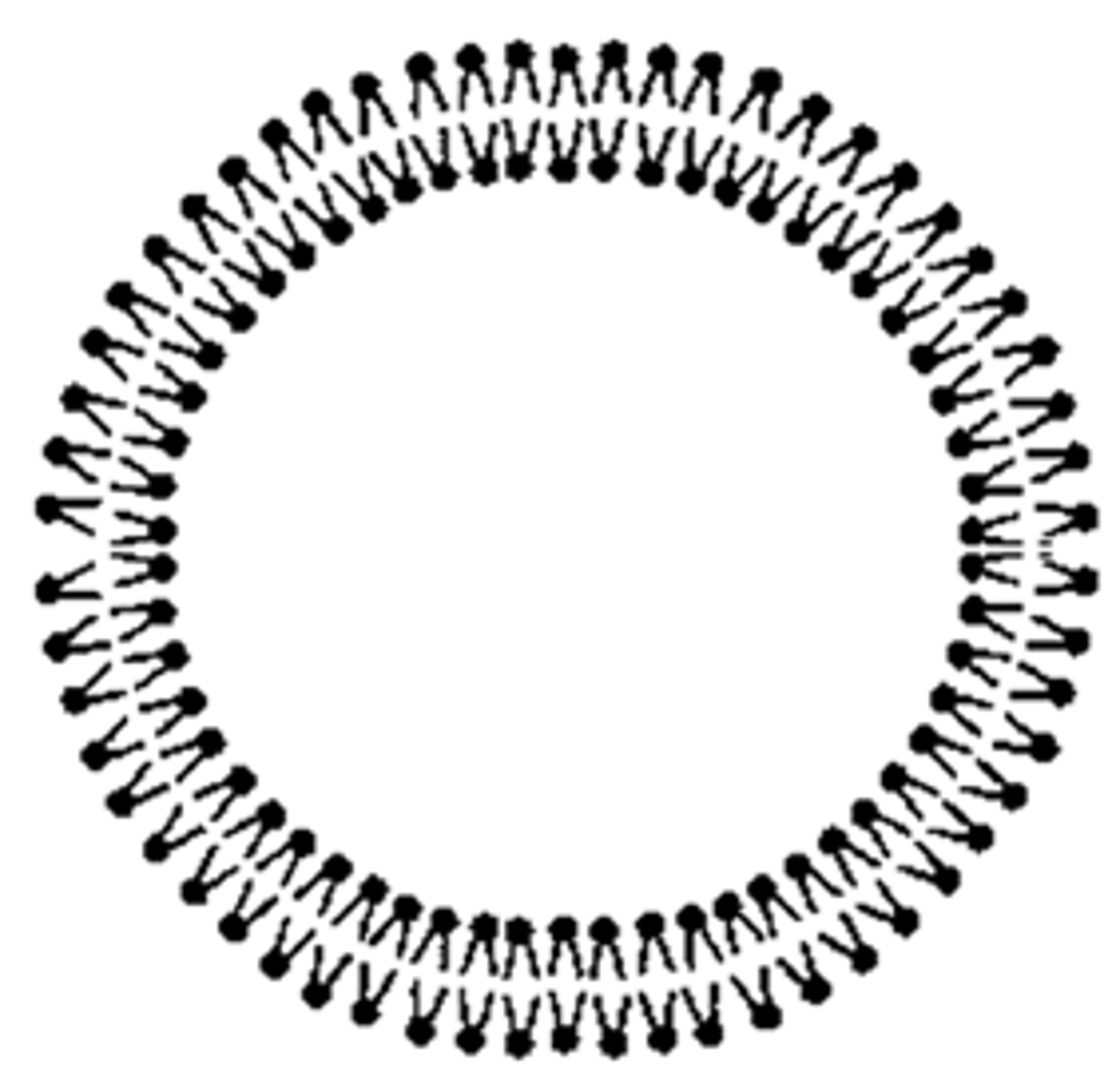
Free-Floating Ribosomes
Make proteins for use by the cell itself
ER Attached Ribosomes
produce secreted or membrane proteins
Mitochondria
- organelle that is the site of ATP (energy) production.
- purpose of folded inner membrane: increases surface area for chemical reactions
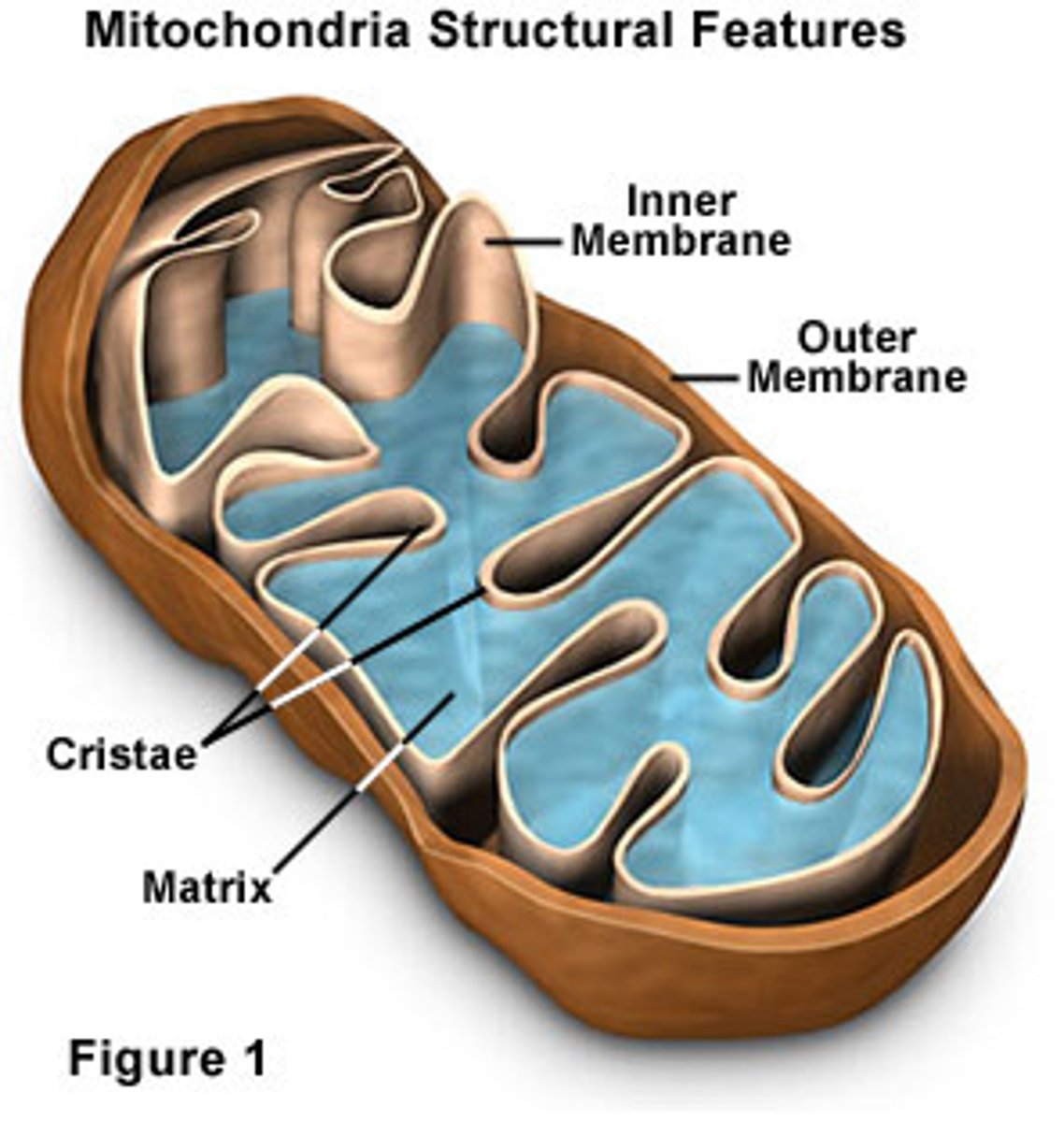
Protein Trafficking Process
1. Protein Production from RER.
2. Sent to the Golgi via vesicles.
3. Proteins are modified within the Golgi
4. Modified proteins are repackaged in Golgi, and sent to cell membrane or remain in vesicles (to become peroxisome or lysosome)
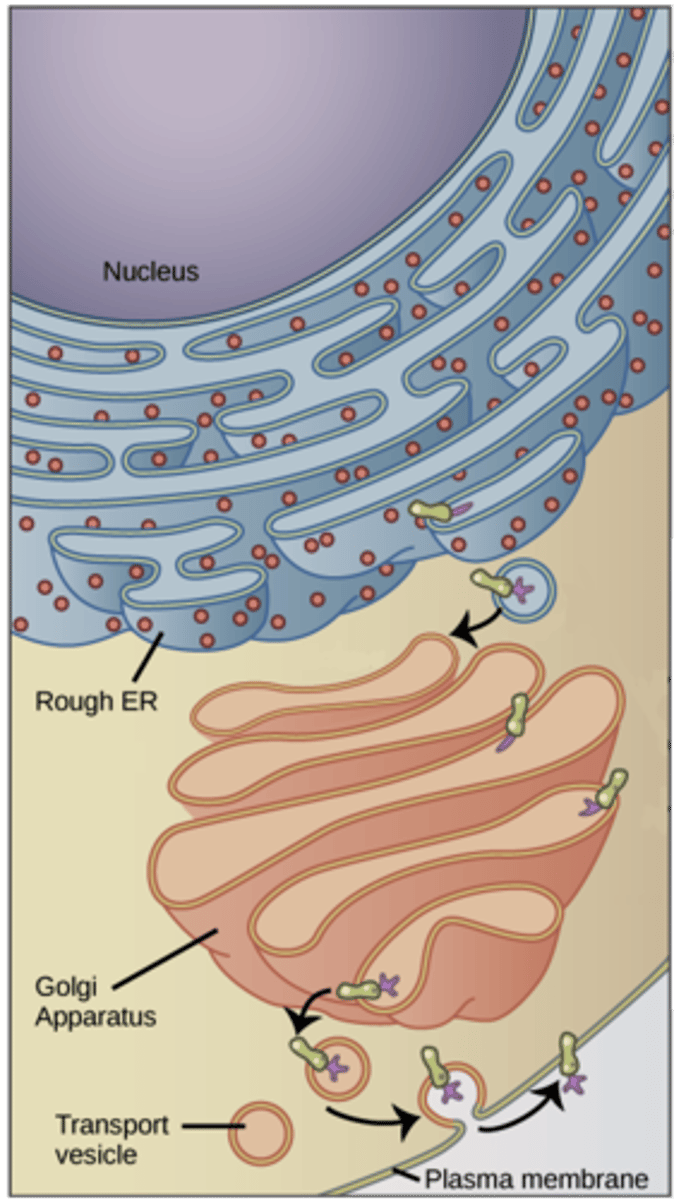
Endosymbiosis Theory
Both mitochondria and chloroplasts were once free-living, independent prokaryotic organisms.
Endosymbiosis Theory Evidence (Regarding Mitochondria and Chloroplasts)
1. Mitochondria & chloroplast have own DNA & ribosomes.
2. DNA & ribosomes are similar to prokaryotes than eukaryotes.
3. Size and membrane structure similar to prokaryotes.
4. Ability to reproduce independently.
5. Perform similar biochemical reactions to prokaryotes.
Cell Size Efficiency
Small = High SA to Vol Ratio = More Efficient
Big = Less SA to Vol Ratio = Less Efficient
Highly folded membranes increase surface area available.
Compartmentalization
Having separate organelles with separate structures and functions.
Osmosis
movement of water due to water potential
Tonicity Types
Hypotonic - high solute concentration inside cell → water flows into the cell (high turgor pressure)
Hypertonic - low solute concentration inside cell → water flows outside of cell (shriveled)
Isotonic - equal concentrations in and out